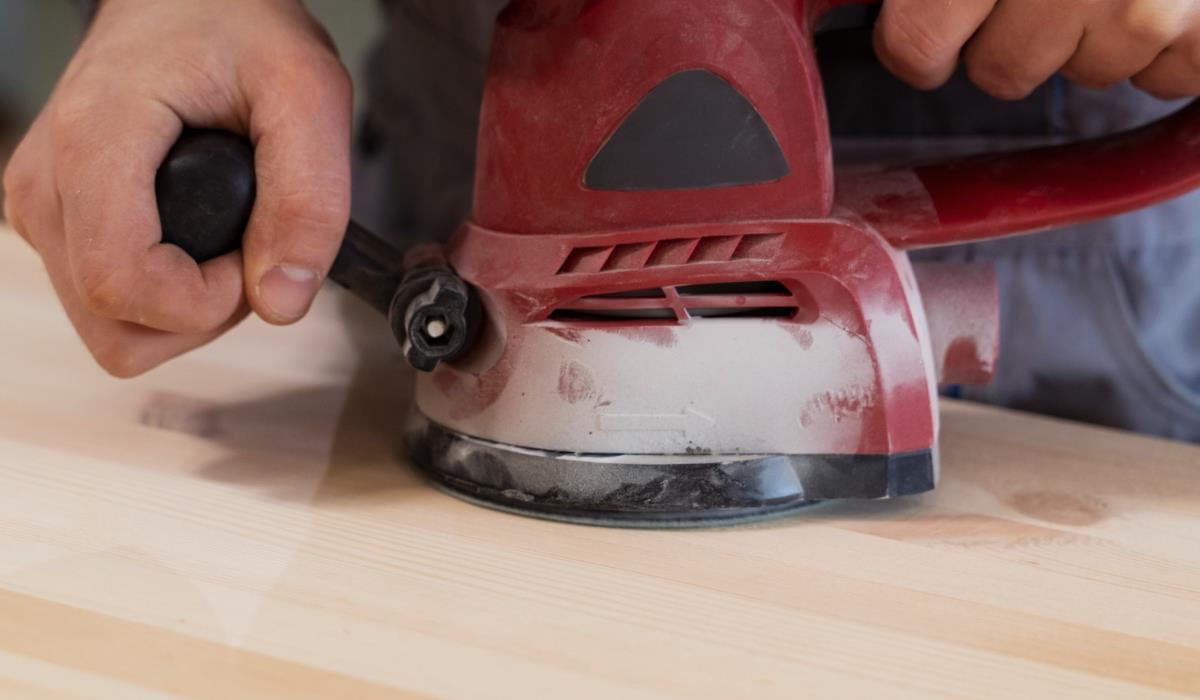Whitewashing wood is similar to painting wood, but with diluted white paint. The cloudy nature of white allows the structure of the wood to be exposed. The best part, however, is that you decide on the exact depth and color of the finish. You can add one layer or as many layers as you like. The choice is yours.
Learning to bleach wood allows you to transform furniture, doors, handrails, bathrooms, kitchens – wherever there is wood – and give it the popular, aged look. It’s a simple technique that any DIY enthusiast can pick up quickly, and no special tools are needed to achieve an attractive finish.
Wood bleaching: Step by step
Before you start, you’ll need a few key materials and tools, including:
- white paint
- sandpaper
- electric grinder
- paintbrush
- mixing container
- roller (optional)
- drying gun (optional)
This is not a difficult task to do yourself, but getting the desired effect depends only on you. You can add one layer for a subtle note, or if you want a deeper finish, add more white. Below we present the process of bleaching previously prepared wood.
Mix the paint

Take your paint, pour it into a container, then add water and mix to create white. A ratio of 1:1 or 2:1 will give a good result. However, if you want a subtler finish, change the ratio to 1:3 or 1:4 by adding more water. If possible, try the mixture on a piece of wood or in an inconspicuous place to see what the effect is. Adjust the mix as needed until you get the finish you want.
Apply paint
Take a painting brush and soak it with paint. Now paint along the grain of the wood in long strokes. The first coat will dry quickly, so try to do it in sections – i.e. where the angles meet to hide the joint. Now use a cloth to remove the excess white, which will help show the grain and give the desired washed-out effect.
Create a whitening effect
Allow the first coat to dry and add another if necessary to achieve the desired depth of color and effect. Between coats, use fine sandpaper – 220 grit is good – and sand down gently. Repeat this process until you are satisfied with the finish.
Wood whitening – protect the color
This step is optional. You can let the white age naturally, or you can add a layer of varnish to the wood to protect the finish. Choose a matte, satin or glossy varnish to complement the white.
Wood bleaching – what kind?
Yes, but only use natural woods such as pine and oak as they have visible grain which will accentuate the bleached effect. There is no point in trying to bleach MDF as it has no grain and lacks character. However, you may want to consider painting the plywood as it has grain and knots that add character to the finish. Whichever wood you choose to whiten, make sure it’s properly prepared before you start.
Do you need to sand the wood before bleaching?

Yes – to get the best bleaching effect, you need to expose the structure of the wood you are using. If you are whitewashing new, bare wood, all you need to do is sand the wood with fine sandpaper to prepare the wood for painting. If the wood you are using is covered with paint, stain or varnish, this must be removed before starting. The stain and varnish can be removed with an electric sander to speed up the process. If the wood is painted, use a sturdy drying gun like the one from Black + Decker available on Amazon to remove most of the paint. Finish the job with an electric hand sander for a clean, smooth, paint-free finish.
What paint to whiten wood?
You can use any paint as long as it is white. But you actually want to use white water-based paint. Chalk paint is a popular choice, but primer, primer or emulsion are also good options. The primer and primer adhere well to the wood and provide a long-lasting finish, but the emulsion is good at creating an aged look. If you are planning an outdoor whitewashing project, you may want to consider the best exterior wood paints as they will add weather resistance and durability to your project. If you want to experiment a bit, you can use any color you like. It may not be a “white” wash, but the principle and techniques are the same no matter what color you use.
How long does white dry?
To get the best whitening result, you need to ask yourself how long it takes for the paint you use to dry. Even though white is a diluted paint, the drying time should be very similar. Expect to wait at least 30 minutes for it to be touch dry and about an hour before you start thinking about applying another coat.



